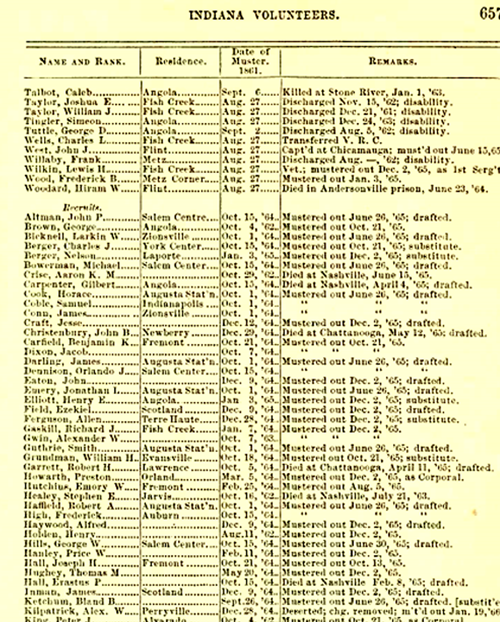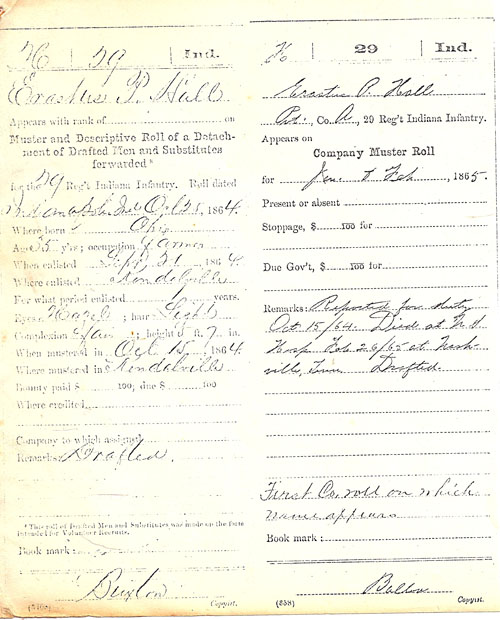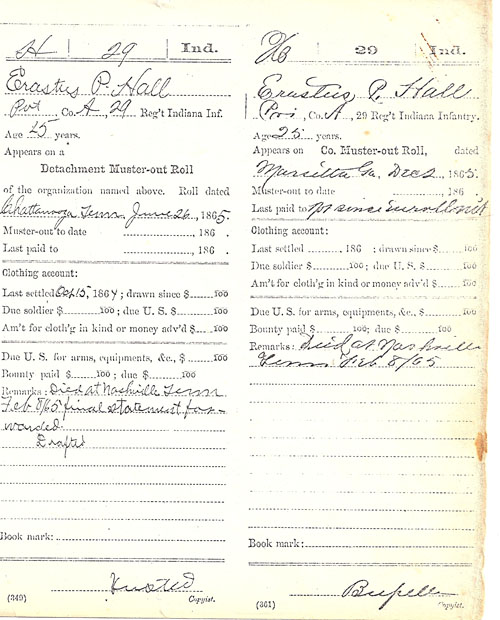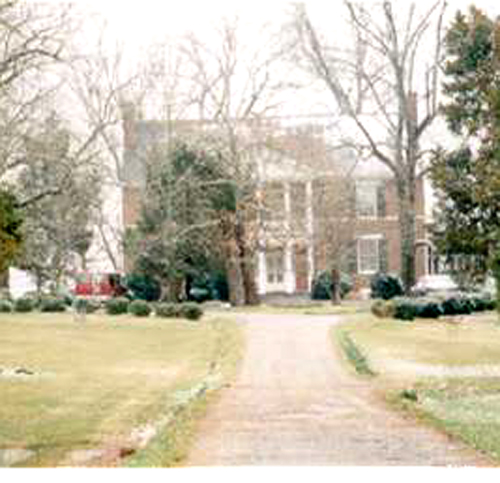« Halls in the Civil War: Nelson Wesley Hall | Main | George Hall of Taunton: Halls of New England excerpt »
Halls in the Civil War: Erastus P. Hall
By Kathryn Hall | June 2, 2013
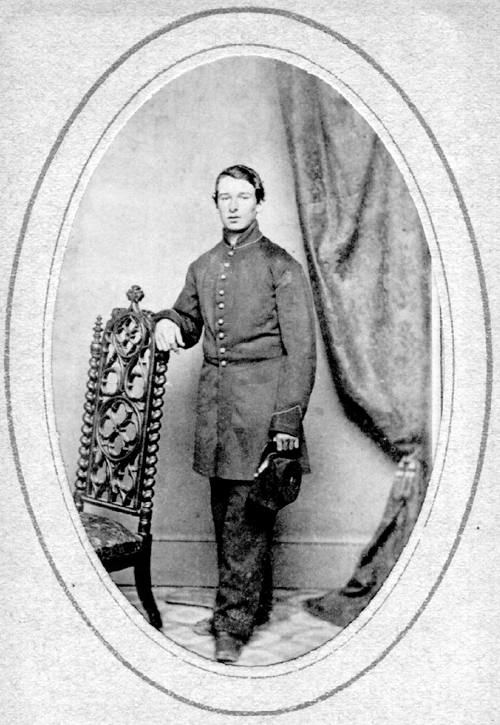
Erastus P. Hall (d. 8 February 1865)
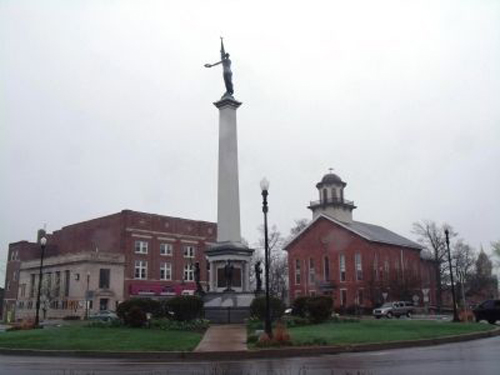
Steuben County Soldiers Monument
Erastus P. Hall is listed on the Steuben County Soldiers Monument as having served in the 29th Indiana Infantry, and died in service. Erastus P. Hall is also listed as a member of the 29th Regiment, Company A in History of Starke County, IN, Vol. 1, 1915, Chapter XVI, The County’s Soldiers, pp.135-137.

Record Series: Military Records
Collection: Civil War
County: StatewideReferencenumber: CIV076626
Accession Number: 1938001
Party: Name
Age: 25
Date Enrolled: 1864/09/21
Where Enrolled: Kendallville, Indiana
Regiment: 29
Company: A
Discharge Date: 1865/02/08
Notes: Died at Nashville, TN. (Hale)
Cavalry/ Battery Unit:
Name: Erastus P. Hall
Party Type: Name
Source: http://www.indianadigitalarchives.org/ViewRecord.aspx?RID=FB35622D12B4C9567E840B700EBEF0D9
Above we find Erastus Hall listed near end of this list of Indiana soldiers. He is drafted 15 October 1864. By the time Erastus is drafted his battalion has already fought the Battle of Shiloh, Battle of Stones River and the Battle of Chickamauga, and the war is winding down. This record lists his death in Nashville as 8 February 1865.
Good morning, Ms. Hall.
Thank you for allowing us to honor your ancestor by placing his final resting place in our National Graves Database for all to use as a resource. I have found Erastus in the 1850 and 1860 De Kalb County, IN Census, and buried as E. P. Hall at Nashville National Cemetery, Section H, Grave # 9371. He has a military headstone, and the Official Record states his death date as 8 February, 1865 in Nashville.
Rick Danes
Graves Registration Officer
Department of Michigan
and Member, National Graves Registration Committee
Sons of Union Veterans of the Civil War

Nashville National Cemetery, Madison,Tennessee
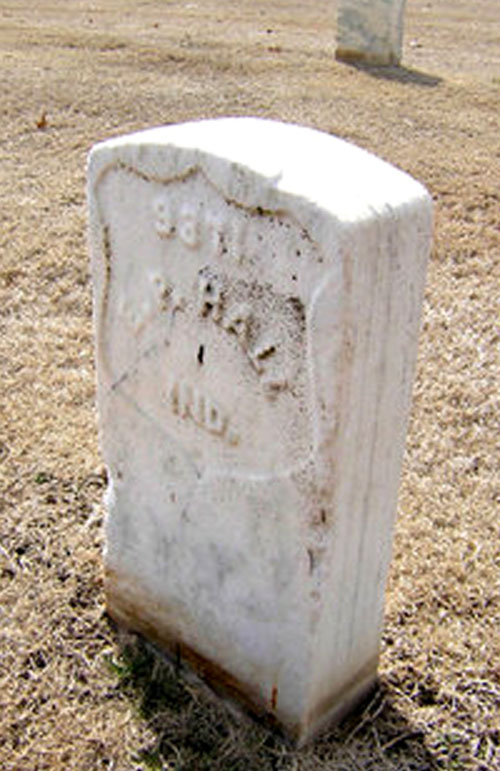
Gravestone of Erastus P. Hall, Nashville National Cemetery, Madison, Tennessee
This is a photo of Hord House, which served as a Union field hospital in Nashville, Tennessee. This is one of the many hospitals in Nashville during the Civil War. Was this the hospital where Erastus P. Hall died on 8 February, 1865? He would have been interred on the grounds of Hord House after his death. In whichever of Nashville’s hospitals he died, when the Nashville National Cemetery was established he was reinterred there. That we know for certain.
[Editor’s note: we have now learned that Erastus died at one of the many General Hospitals in Nashville, according to his widow’s pension request. I will continue to try to refine that search and ID the exact hospital. KH]
“Most of the land for Nashville National Cemetery was acquired shortly after the Civil War. In July 1866, 45 acres were transferred to the United States from Morton B. Howell, master of the Chancery Court of Nashville, in accordance with the decree of the court. During the first few months of 1867, another 17 acres were conveyed in the same manner. The final portion, about 1-1/2 acres, was purchased by the United States in 1879 from J. Watts Judson.
The original interments were the remains of soldiers removed from temporary burial grounds around Nashville’s general hospitals, as well as the Civil War battlefields at Franklin and Gallatin, Tenn., and Bowling Green and Cave City, Ky. There are 4,141 unknowns interred at Nashville National Cemetery.
The stone wall around the cemetery and the limestone archway at the entrance were both constructed in 1870.”
Notes on Hord House are drawn from Stones River National Battlefield Historic Resource Center (2004) by Sean Styles:
Hord House
This home, also known as Elmwood, is located on the Nashville Pike. It was constructed in 1842 using bricks produced by slaves owned by Thomas Hord, who supervised the building of this house. This structure is an I-house with end wall chimneys; a two-story pedimented portico occupies the middle bay of the three-bay facade. Some historic wooden farm outbuildings also remain. The house and other structures on the farm are included in the National Register of Historic Places (NR Identification 73001823).At the time of the battle, Thomas and Mildred Amelia Gilmer Hord lived at Elmwood. Although his oldest son joined the Confederate army, Thomas Hord held unionist sentiments. During the Battle of Stones River, Union forces used the Hord House as a hospital. The Hord family was actually in residence at the time of the battle, and Thomas Hord related that “the house was unexpectedly and suddenly taken for a hospital and the wounded brought in so rapidly that there was not time or means of removing the carpets or furniture.” Amelia Hord
assisted in caring for the wounded despite her advanced pregnancy.
Here are some more facts about Union hospitals in Nashville during the Civil War:
The Union military hospital network on Nashville accounted for 10-15% of the Union’s total military hospital capacity, serving approximately 100,000 soldiers during the Civil War. At the worst of times over 14,000 men were being cared for at a time. The Union Nashville hospital network had the third largest medical school in the US, and by standards of the day, Nashville’s system was first rate. The death rate among patients was 8-10%. This hospital network in Nashville was located along major water and rail lines. Harper’s Weekly published these images in their February 1864 issue, which expands our understanding of what it took to get wounded and dying soldiers off the battlefields into care.
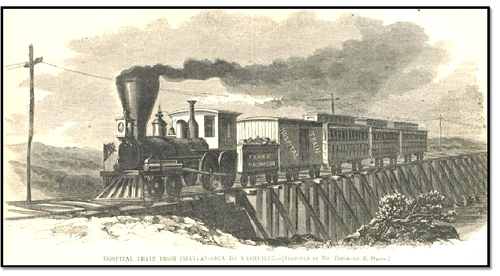
hospital train taking soldiers from Chattanooga to Nashville Union hospital network
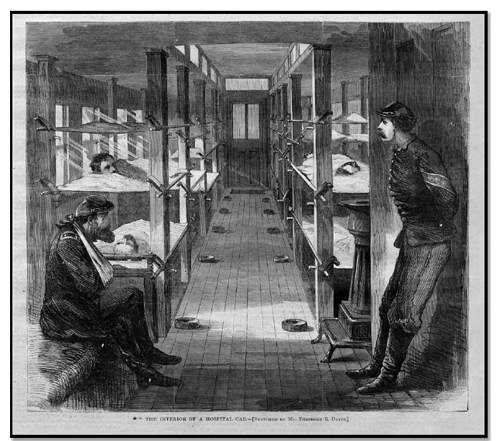
inside the Union hospital train
29th Regiment Indiana Infantry
Organized at LaPorte, Ind., and mustered in August 27, 1861. Ordered to Kentucky and joined General Rousseau at Camp Nevin October 9, 1861. Attached to Wood’s Brigade, McCook’s Command at Nolin, Ky., to November, 1861. 5th Brigade, Army of the Ohio, to December, 1861. 5th Brigade, 2nd Division, Army of the Ohio, to September, 1862. 5th Brigade, 2nd Division, 1st Corps, Army of the Ohio, to November, 1862. 2nd Brigade, 2nd Division, Right Wing 14th Army Corps, Army of the Cumberland, to January, 1863. 2nd Brigade, 2nd Division, 20th Army Corps, Army of the Cumberland, to October, 1863. 1st Brigade, 1st Division, 4th Army Corps, Army of the Cumberland, to April, 1864. 1st Separate Brigade, Garrison at Chattanooga, Tenn., Dept. of the Cumberland, to January, 1865. 2nd Brigade, 1st Separate Division, District of the Etowah, Dept. of the Cumberland, to May, 1865. 2nd Brigade, 2nd Separate Division, District of the Etowah, Dept. of the Cumberland, and Dept. of Georgia, to December, 1865.
SERVICE.– Camp at Nolin River, Ky., till December, 1861, and at Munfordsville, Ky., till February, 1862. March to Bowling Green, Ky., thence to Nashville, Tenn., February 14-March 3, and to Savannah, Tenn., March 16-April 6. Battle of Shiloh, Tenn., April 6-7. Advance on and siege of Corinth, Miss., April 29-May 30. Near Corinth May 9. Pursuit to Booneville May 31-June 6. Buell’s Campaign in Northern Alabama and Middle Tennessee June to August. Gallatin August 13. March to Louisville, Ky., in pursuit of Bragg, August 21-September 26. Pursuit of Bragg into Kentucky October 1-15. Near Clay Village October 4. Dog Walk October 9. March to Nashville, Tenn., October 16-November 7. Reconnoissance to Lavergne November 26-27. Lavergne, Scrougesville November 27. Duty at Nashville till December 26. Advance on Murfreesboro December 26-30. Battle of Stone’s River December 30-31, 1862, and January 1-3, 1863. Duty at Murfreesboro till June. Action at Triune June 11. Middle Tennessee or Tullahoma Campaign June 23-July 7. Liberty Gap June 24-27. Occupation of Middle Tennessee till August 16. Passage of Cumberland Mountains and Tennessee River and Chickamauga (Ga.) Campaign August 16-September 22. Battle of Chickamauga September 19-20. Reopening Tennessee River October 26-29. Duty at Bridgeport, Ala., till January, 1864. Garrison duty at Chattanooga till May, 1865. Action at Dalton, Ga., August 14-15, 1864. Garrison duty at Marietta and Dalton, Ga., till December. Mustered out December 2, 1865.
Regiment lost during service 4 Officers and 56 Enlisted men killed and mortally wounded and and 4 Officers and 240 Enlisted men by disease. Total 304.
Source: A Compendium of the War of the Rebellion by Frederick H. Dyer. Copyright, 1908.
Name: E P Hall
Service Info.: PRIVATE US Army
Death Date: 8 Feb 1865
Interment Date: 8 Feb 1865
Cemetery: Nashville National Cemetery
Cemetery Address: 1420 Gallatin Road, South Madison , TN 37115
Buried At: Section H Site 9371
Editor’s notes: Throughout the years it has been speculated that Erastus P. Hall’s middle name was either Pease or Perry. It is my belief that neither of these is correct. It is my belief that his middle name was Plimpton, and that his parents, Luke Hall and Mercy Steadman Hall, named him after Reverend Billings O. Plimpton of the Methodist Church, as they were founding pioneers of Plimpton’s congregation. See notes on Erie Conference. The fact that Luke and Mercy Hall named their older son Nelson Wesley Hall, a clear nod to Methodist founder John Wesley, only adds to the speculation. It is also noteworthy that the leaders of their Methodist congregation were fierce abolitionists, adding to a motive for Erastus and his brother to join the Union army, especially given the pioneering role his parents played in the founding of the church. KH
Topics: Civil War | No Comments »


